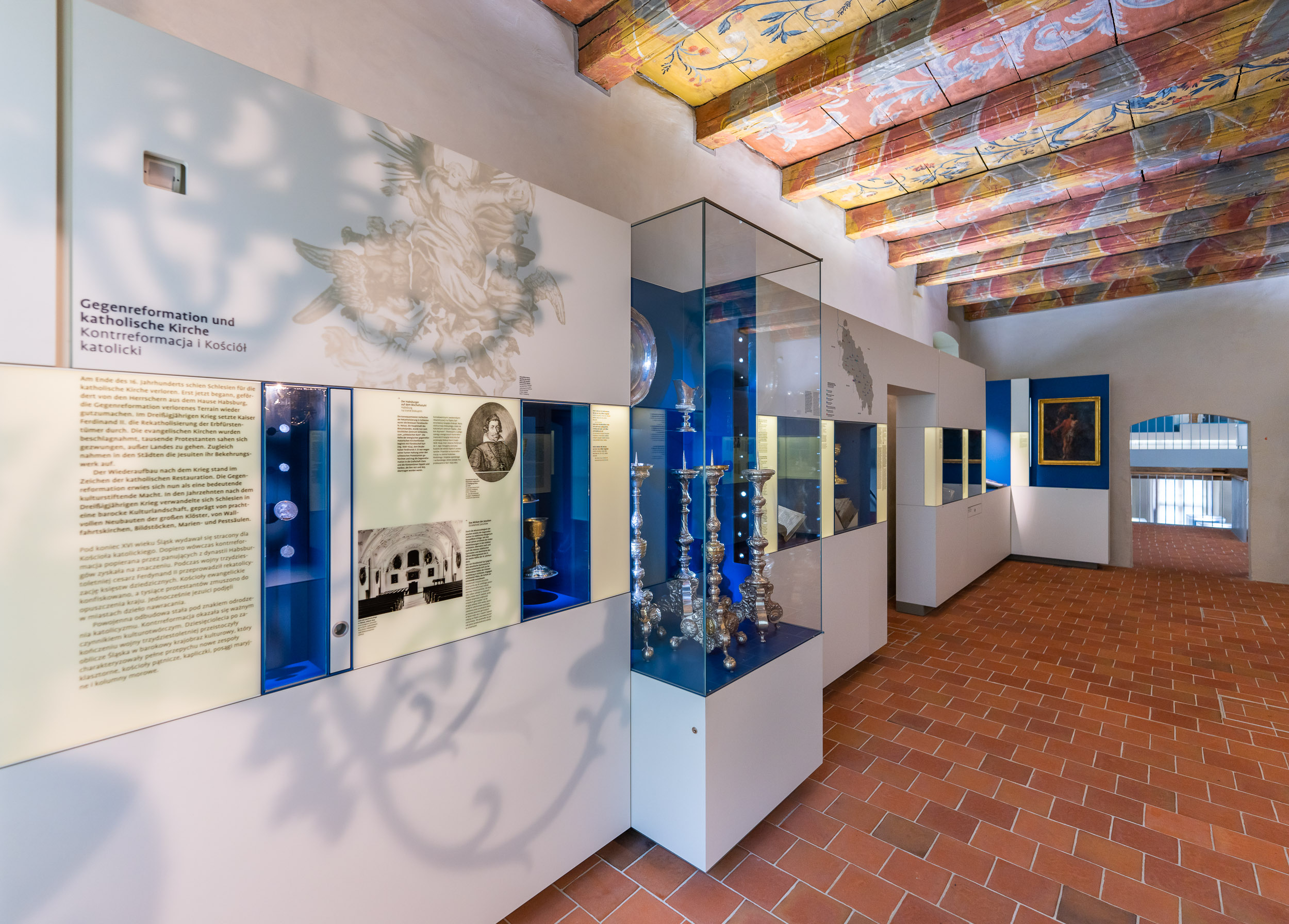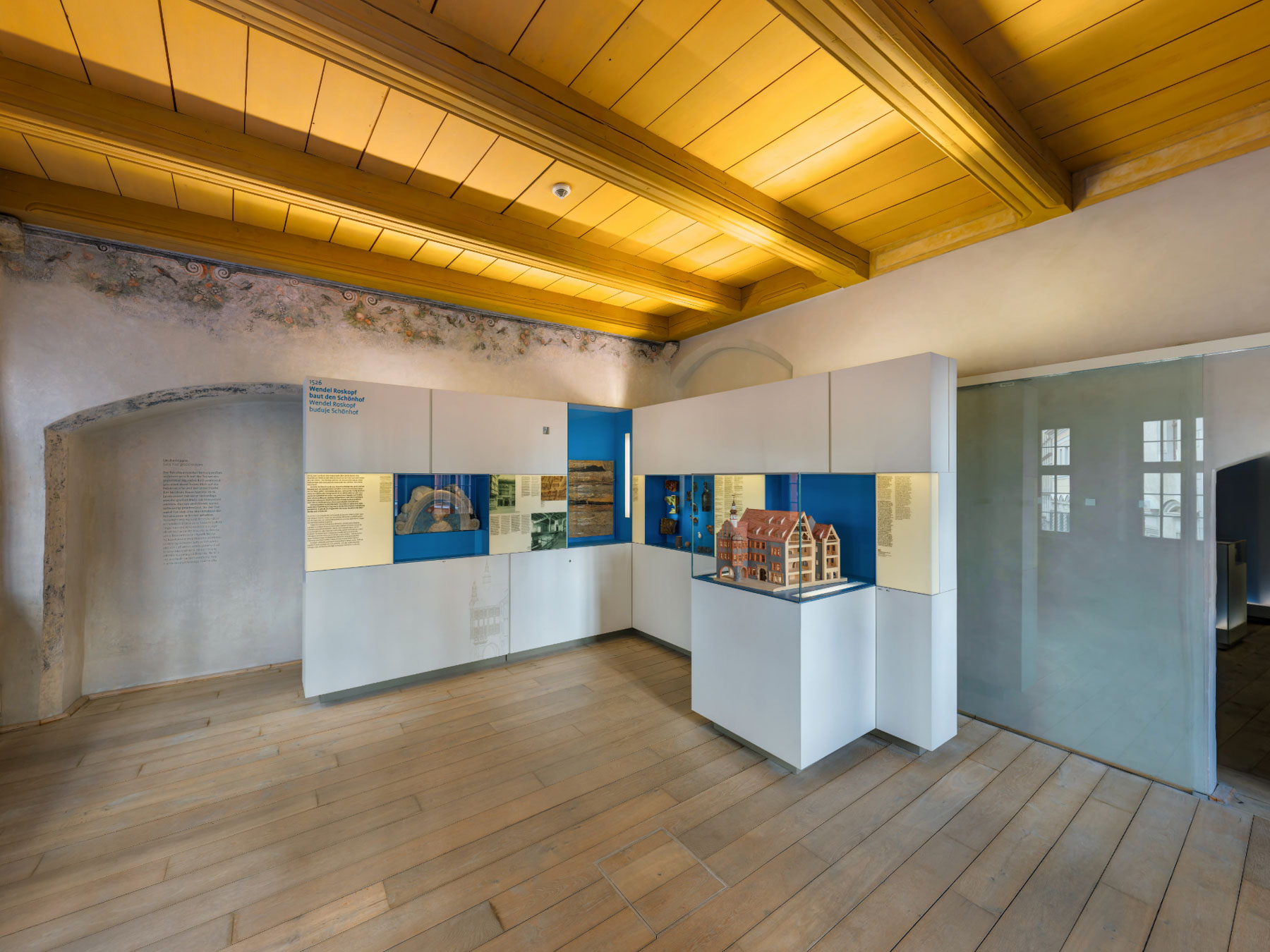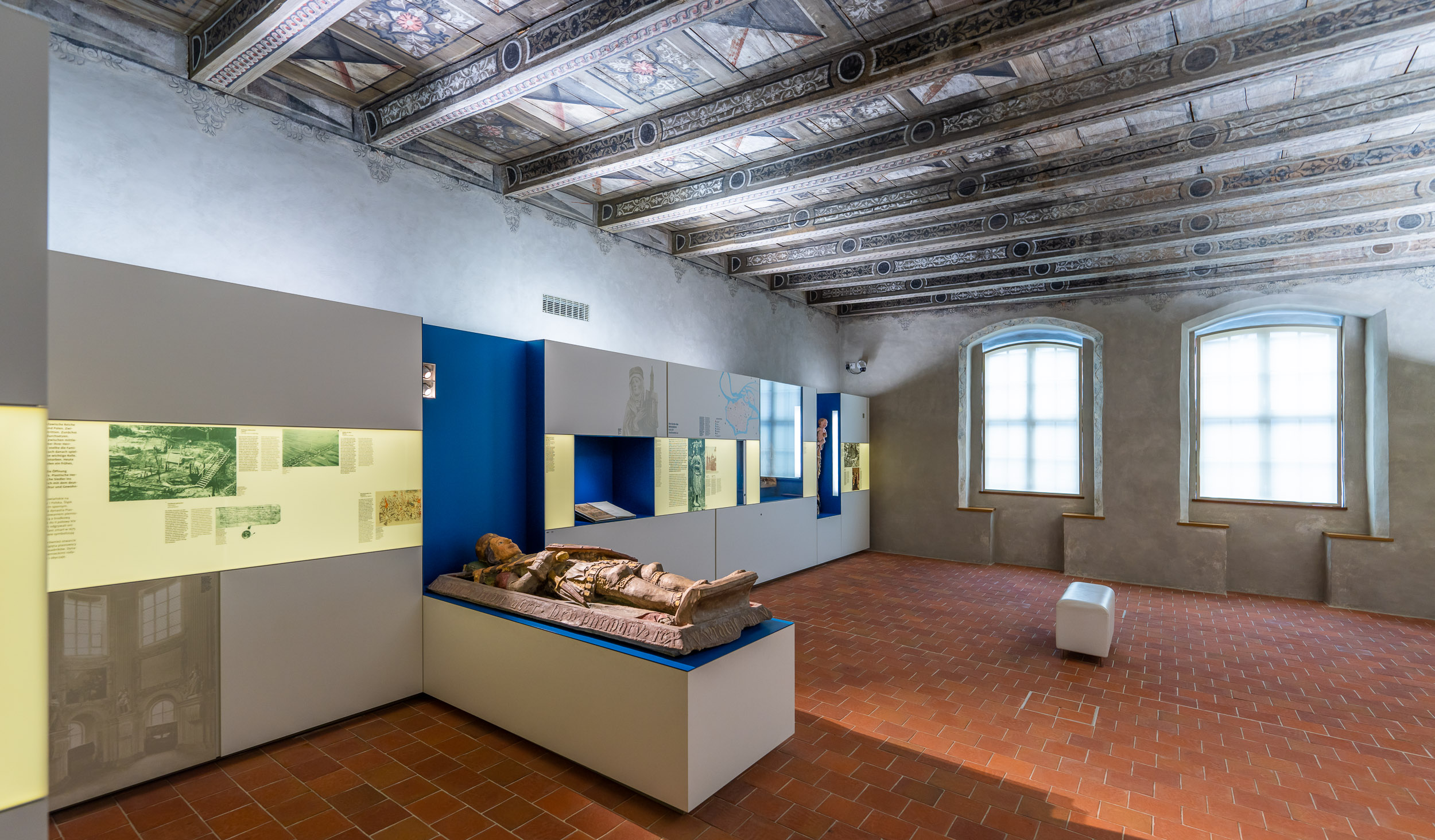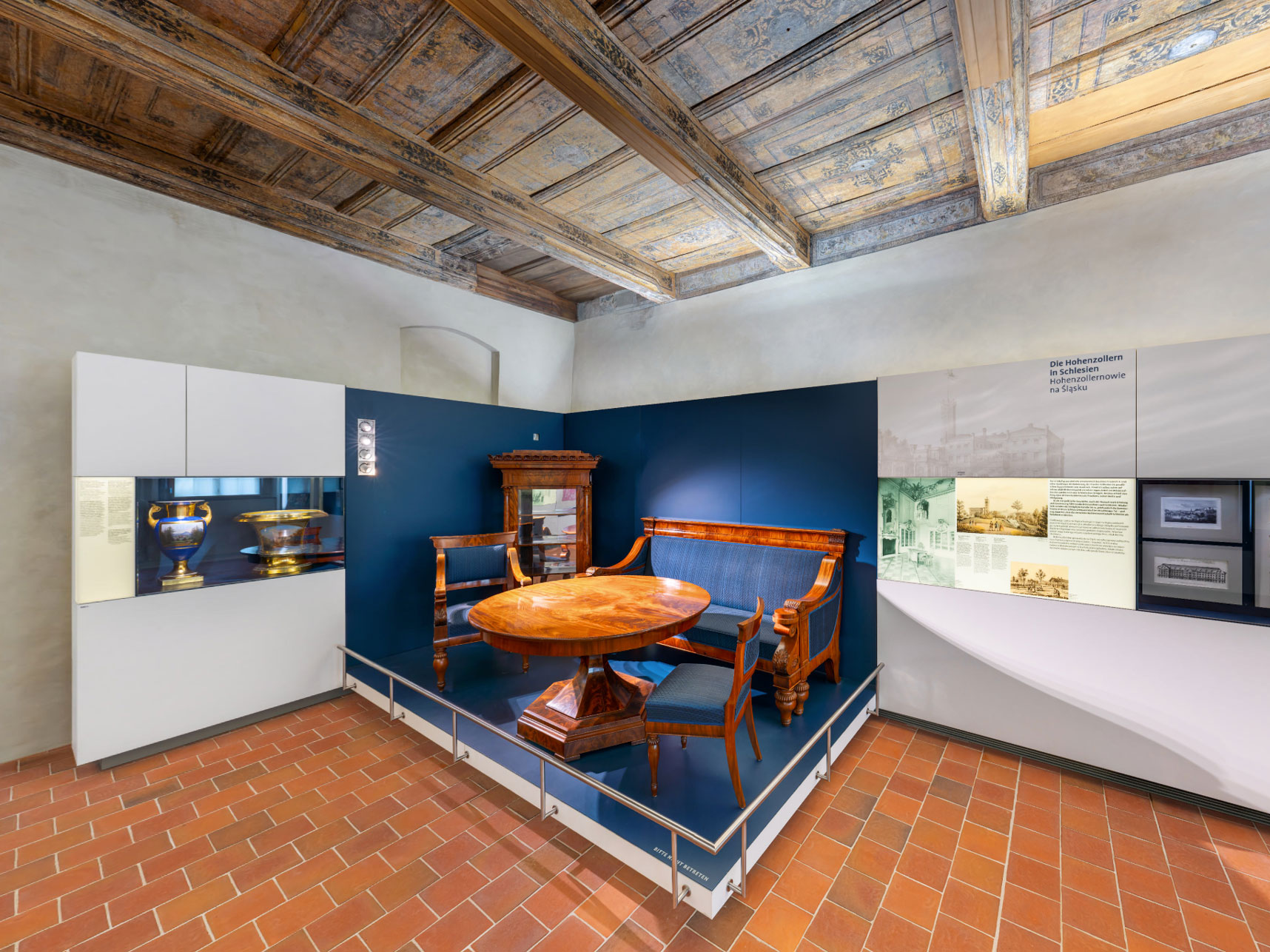
Madonna with baby Jesus
Photographs
Grüssau house altar on the run
In 1945, the figure of the Virgin Mary in a brocade cloak was in the luggage of a family fleeing westwards from the Silesian monastery of Grüssau. The family had leased the Grüssau monastery mill for several generations. The Madonna and Child, probably a monastic work from the 18th century, was used for domestic devotion and was kept in a wooden shrine.
The Cistercian monastery of Grüssau was an important place of pilgrimage where Catholic Christians venerated an image of the Virgin Mary. Under the legendary Abbot Bernhard Rosa, it experienced its “golden age” in the last third of the 17th century. After suffering repeatedly over the centuries in the Hussite Wars, during the Reformation and in the Thirty Years’ War and losing numerous monks, it now became the centre of the Catholic Counter-Reformation in Silesia.
Abbot Rosa employed the best painters, engravers and writers to proclaim the word of God and increase the fame of the Catholic Church and his monastery. The painter Michael Willmann, the “Silesian Rembrandt”, who painted the famous fresco cycle in St Joseph’s Church in Grüssau, worked for him. The precious statue of the Virgin Mary in an embroidered cloak with a golden crown on her head also bears witness to this period.
In 1742, the monastery, like almost all of Silesia, fell to Prussia. Due to the secularisation of the state, the abbey was dissolved in 1810 and the monastery lost its importance. After the collapse of the Habsburg monarchy, German Benedictines from the Emmaus Monastery in Prague repopulated it in 1919. After the expulsion of the German Silesians, the monastery was taken over by Polish Benedictine nuns expelled from Lviv in 1945.
See similar attractions!
On a 2000 m2 exhibition space, visitors can explore approximately 1000 exhibits from the history of Silesian culture.
)
)
)
)